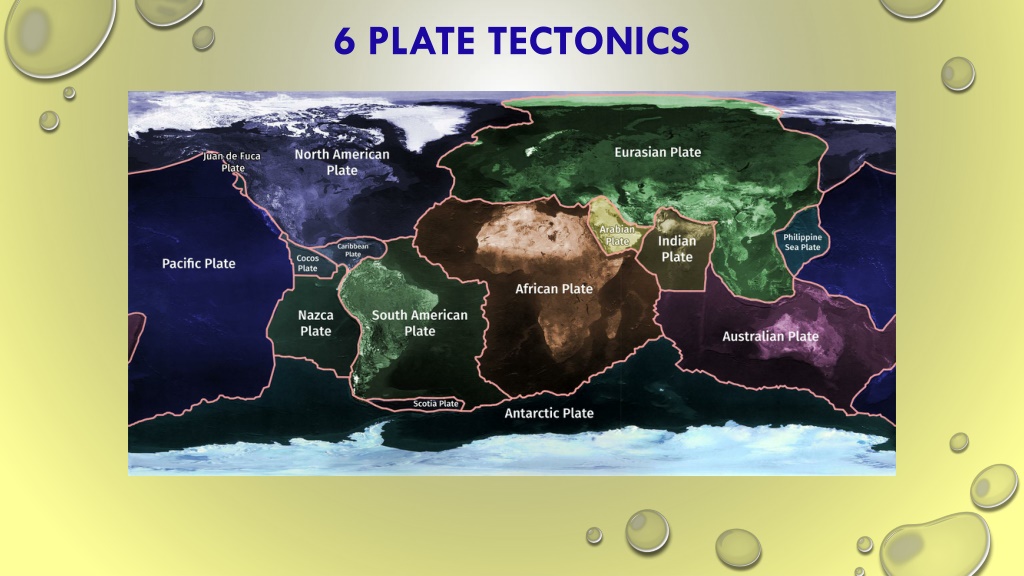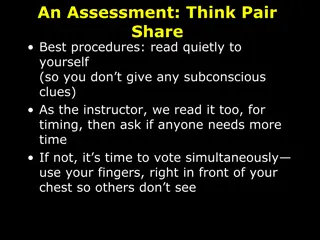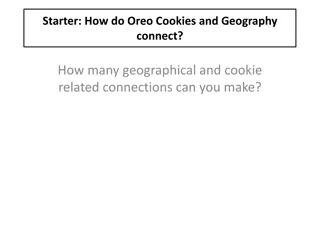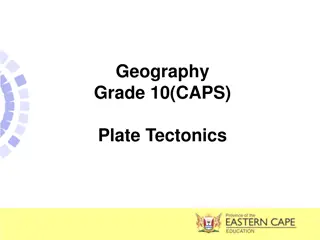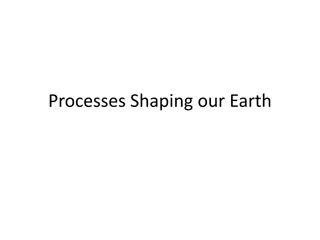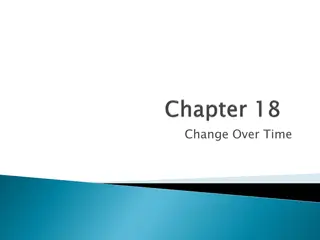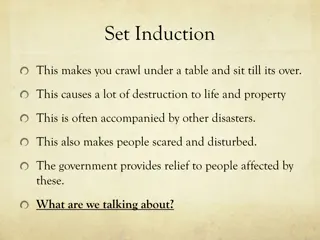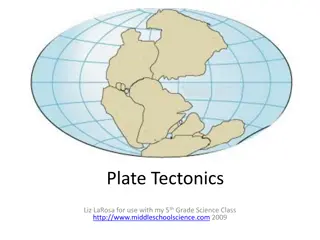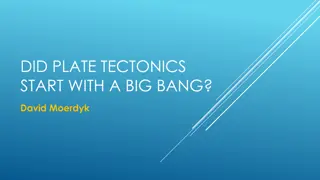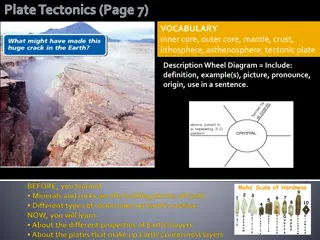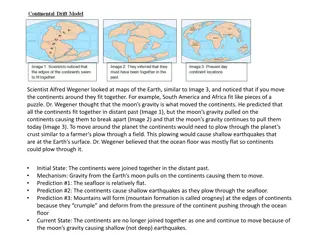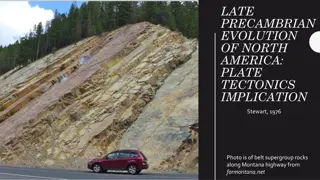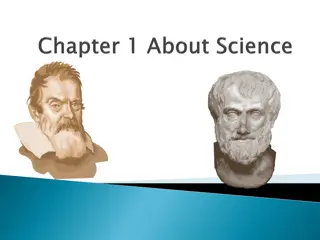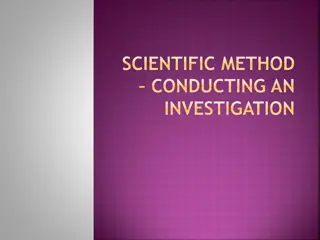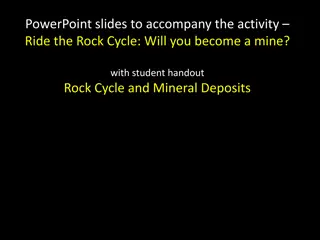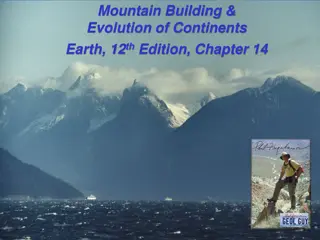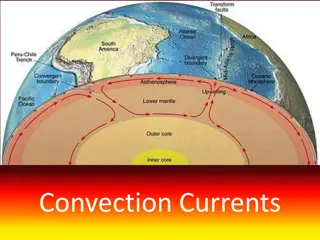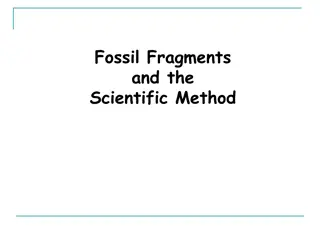Exploring Plate Tectonics and the Scientific Method
Dive into the world of plate tectonics and the scientific method in this lesson. The session covers vocabulary and grammar review, giving and receiving feedback, learning new concepts related to plate tectonics, and understanding participles and participial adjectives. Explore the theory of plate tectonics, discuss conditionals, provide feedback, and analyze the scientific method. Discover the phases of the scientific method, understand how plate tectonics has evolved, and explore the evidence supporting the theory. Engage in thought-provoking discussions on the movement of continents and the vast information gathered in this fascinating subject.
Download Presentation

Please find below an Image/Link to download the presentation.
The content on the website is provided AS IS for your information and personal use only. It may not be sold, licensed, or shared on other websites without obtaining consent from the author. Download presentation by click this link. If you encounter any issues during the download, it is possible that the publisher has removed the file from their server.
E N D
Presentation Transcript
IN THIS LESSON WE ARE GOING TO: revise some vocabulary and grammar from the previous lessons learn how to give a feedback and how to learn from the feedback (poster presentation) learn new vocabulary and phrases related to the topic of plate tectonics and the scientific method learn some basics about present and past participles and participial adjectives (interesting/interested)
REVISION - CONDITIONALS How/the life on our planet/different/if/it/be/flat? What/you/do/if/you/not/pass/English exam this year? What/people and animals experience/if/a volcano/erupt? It/be better/if/there/be/only one continent on our planet? You/be/happier/if/dinosaurs/not become extinct? How/you/change the layout of our planet/if/you/be able/to influence the continental drift?
FEEDBACK What did you like? (interesting moments, thoughts) What would you change? How and why? (recommendations) Analyse the following: Content Structure Visuals Presentation skills
SCIENTIFIC METHOD Put the following phases in the correct order 1. Gathering data 2. The hypothesis becomes a theory 3. Prediction 4. Predictions are tested 5. Hypothesis proposed 6. A question asked or problem raised
STRUCTURES We will illustrate the scientific method by showing how plate tectonics has evolved. to find only supporting evidence. Most of the questions being asked were treated as separate problems wanting separate hypotheses. Does melting take place in the descending plate or in the overlying mantle? A question asked or problem raised. What is the difference between supported and supporting evidence?
DISCUSS We are working with the theory which was confirmed several years ago. The results which indicate that the continents are moving are convincing. A question which is being asked at the moment is serious. The information which was gathered increased enormously. The picture which illustrates this phenomenon is quite funny.
SOURCES https://www.youtube.com/watch?v=-F7MRS_zyD8 (listening plate tectonics) https://www.youtube.com/watch?v=1f-duh6frmo (magnetic field) http://the-dialogue.com/en/en66-how-plate-tectonics-is-connected-with-life-on-the-planet/ (picture) Liz and John Soars, Tim Falla, New Headway Advanced (workbook), OUP, Oxford 2003 (grammar exercise)
